On June 18, the communities of Sipakapa, a municipality affected by GoldCorp’s Marlin Mine in Western Guatemala, celebrated the eighth anniversary of one of the first community consultations in the country. Today, more than 70 community consultations on natural resource exploration and exploitation have been carried out throughout Guatemala. In every case, communities have resoundingly rejected mega-projects on their territory voting NO to mining and YES to life.
On Tuesday, more than 1,000 men, women and children peacefully gathered in Sipakapa, in the department of San Marcos, to demand respect for the community consultation and to demonstrate their opposition to GoldCorp’s Marlin Mine. The people of Sipakapa confirmed once again: Sipakapa is not for sale / Sipakapa no se vende!
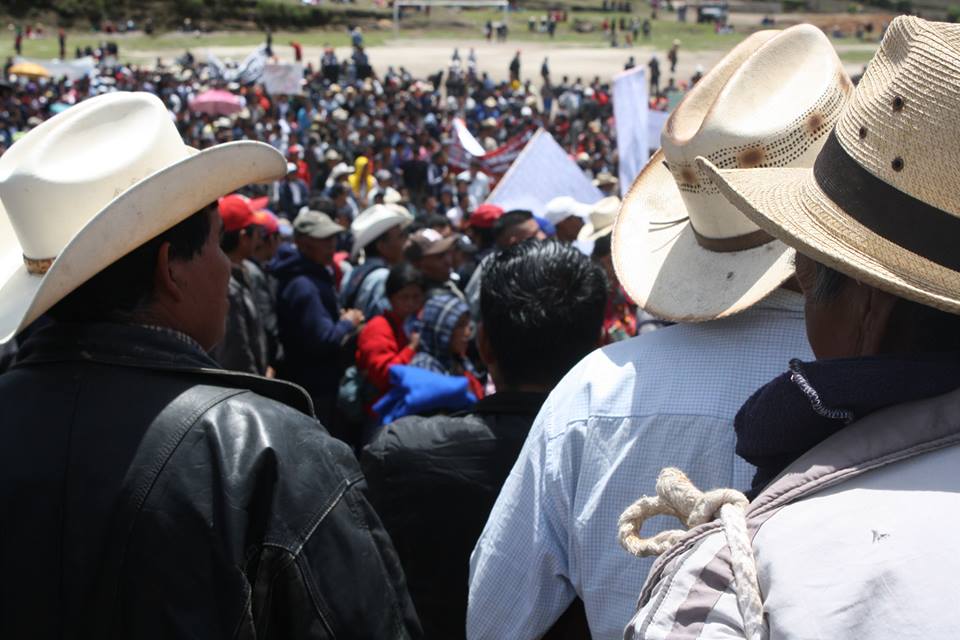 |
| Thousands gather to celebrate the anniversary of one of Guatemala’s first community consultations in 2005 around the Marlin Mine in Sipakapa, San Marcos. Photo: COPAE |
In recent months, repression, violent attacks and a state of siege have shifted public attention to GoldCorp’s newest investment in Guatemala, Tahoe Resources’ Escobal silver mine, of which GoldCorp holds 40% of the shares. However, the social and environmental impacts of the Marlin Mine continue to be a major concern for residents in the surrounding communities.
At a press conference on May 19, the Center for Legal, Environmental and Social Action in Guatemala (CALAS) and the organization Juridical Pluralism (Plurijur) presented evidence of the possible existence of chronic arsenic poisoning and other environmental illnesses in the region of the Marlin Mine in the department of San Marcos. Chronic arsenic poisoning is typically caused by exposure to high levels of arsenic in groundwater, a possible result of pollution from the mine.
The health impacts mining have long been a concern for affected communities as was demonstrated during the People’s International Health Tribunal in 2012. Technical studies have also shown that Marlin’s mine operations present significant health risks. Researchers from Physicians for Human Rights and the University of Michigan have released a study showing that individuals living closer to the mine had higher levels of arsenic and other potentially toxic metals than those living further away. Studies confirming the negative environmental and health impacts of the mine have also been carried out by researchers at the University of Ghent in Belgium and E-Tech International, a New Mexico based environmental organization.
In 2010, in response to a petition submitted by Marlin Mine affected communities, the Inter-American Human Rights Commission urged the Guatemalan government to suspend all operations at the mine. In the face of governmental pressure, the recommendation to suspend all operations was lifted the following year. However, other recommendations remained in place, including an order that the government ensure the quality of water resources in the area of the mine. According to Carlos Loarca of Plurijur, the government announced in August 2012 that they would install a treatment plant for water contaminated by mine’s operations, but the communities have not been aware of any follow-up actions taken by the government.
During the Sipakapa consultation anniversary activities this week, representatives of the community expressed their ongoing concerns about the impacts of mining on their territory and communities, including the contamination of water sources used for human consumption and crops. Community activist and human rights defender Crisanta Pérez called for unity and strength moving forward saying: “Today Sipakapa rejected mining, and all of our brothers and sisters have to continue on the path no matter what we suffer or what we live through, we must continue forward. Today Montana Exploradora (Canadian subsidiary of GoldCorp) – wants to exploit our communities, but the people want to express themselves and each day we continue to grow.”

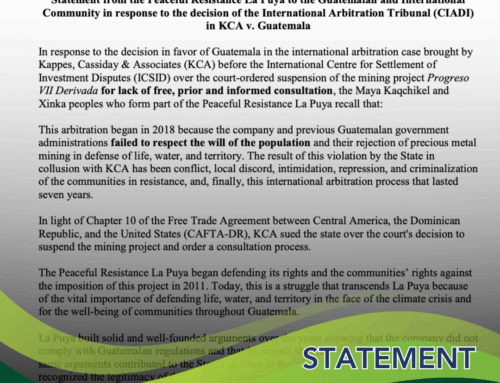
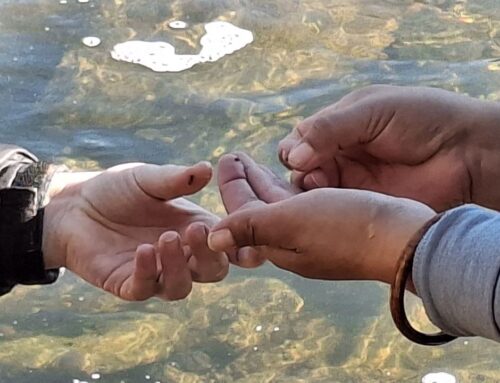
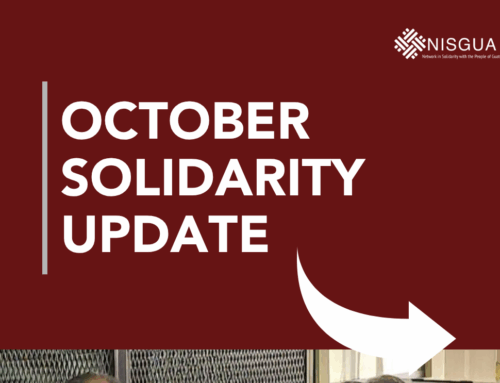
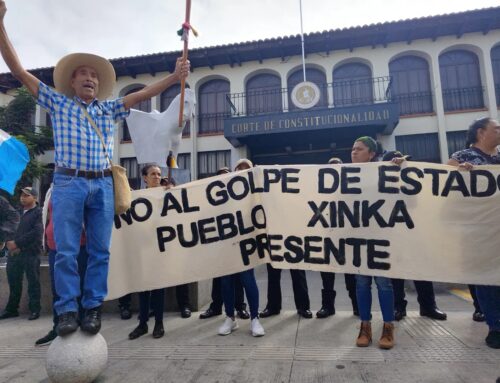
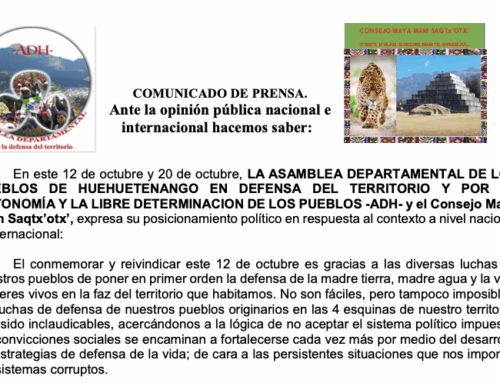
Leave A Comment